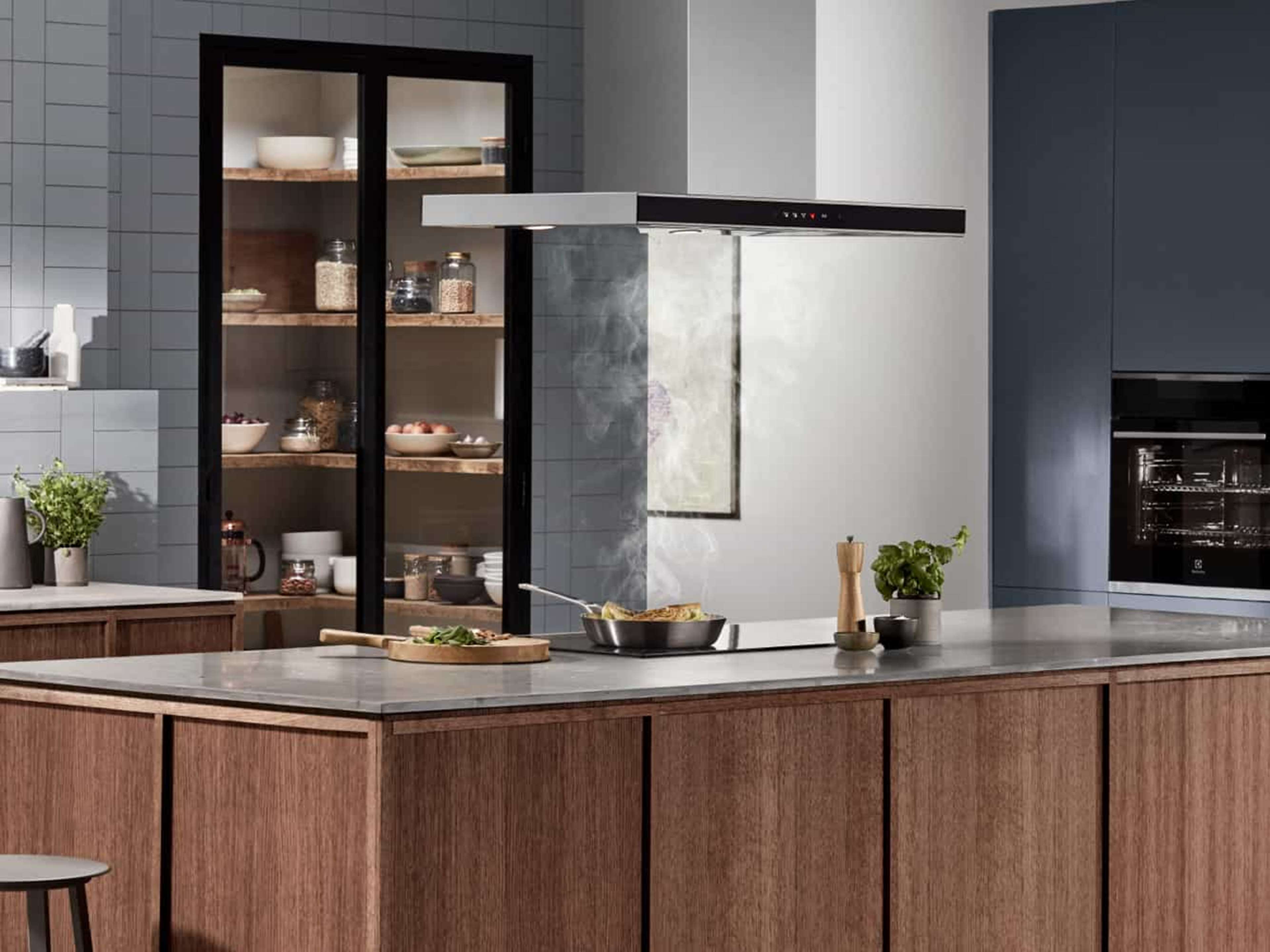When choosing a hood that's the right size for your kitchen, you must consider several factors. Ensure the hood covers your hob's entire cooking surface so that it can effectively remove smoke and steam. The hood should also be mounted at the proper height above the hob. It should be proportional to the size of your kitchen and hob, and its cubic feet per minute (CFM) rating should be sufficient to handle the amount of smoke and steam generated. As a general guideline, you should aim for a CFM of at least 100 for every square meter of kitchen space. Additionally, be sure to check local building codes, as some may specify minimum hood size requirements based on the size of your kitchen and hob.
Choosing the right hood for your kitchen
When it comes to cooking, a well-ventilated kitchen is essential for removing smoke, steam, and cooking odours. Choosing suitable hood for your kitchen can be a challenge. Still, with the right information and considerations, it can be done easily. Whether you're looking for a wall-mounted hood, island hood, downdraft hood, or one that's built right into the hob, there are many factors to consider, such as size, airflow and style. This guide will provide the information you need to make an informed decision about the best ventilation for you.
Different kinds of hoods
There are several types of kitchen ventilation to consider:
- Wall-Mounted Hood: This is the most common type of ventilation hood. It is mounted on the wall above the hob and removes smoke and steam through ductwork.
- Island Hood: Similar to a wall-mounted hood, but mounted on the ceiling above an island hob.
- Under-Cabinet Hood: This type of hood is mounted under the cabinets above the hob and is often used in kitchens with limited wall space.
- Hob with Integrated Hood: This type of hood is built into the hob and is often used in kitchens with a sleek, modern look.
Each type of hood has its advantages and disadvantages, so it is essential to consider your kitchen layout and cooking needs when choosing the right ventilation. Additionally, it is important to choose a hood with adequate airflow and noise level and to make sure it is compatible with your existing ductwork or can be installed appropriately with new ductwork.
Air flow
When considering airflow for kitchen ventilation, there are a few key factors to keep in mind:
- Cubic Meters per Hour (m3/h): This measures the air the ventilation hood moves every hour. The m3/h rating should be sufficient to handle the smoke and steam your hob generates. A general guideline is to have at least 0.1 m3/h for every square meter of kitchen space.
- Decibels (dB): This is the measurement of the noise level produced by the ventilation hood. Lower dB ratings indicate a quieter hood, while higher dB ratings indicate a louder hood. Consider the decibel level of the hood, especially if you have an open-plan kitchen.
- Type of Ventilation: Different ventilation hoods, such as wall-mounted, island, downdraft or built-in to the hob, have different airflow capabilities. Consider the kind of hood that is best for your kitchen layout and the cooking you do.
- Ductwork: Ensure the ventilation hood is compatible with your existing ductwork or can be appropriately installed with new ductwork. The ductwork should be correctly sized and insulated to ensure maximum airflow and minimise noise.
Choosing a ventilation hood with adequate airflow is crucial to effectively remove smoke and steam from your kitchen while also considering noise level and compatibility with your kitchen layout and ductwork. Our kitchen experts can help you find the right solution for your kitchen.
Style
To determine which style of hood fits your kitchen, consider the following five factors:
- Kitchen Layout: Take into account the location of your hob and cabinets. Wall-mounted hoods are best for kitchens with wall space above the hob, while under-cabinet hoods are best for kitchens with limited wall space. Island hoods are best for kitchens with island hobs, and downdraft hoods are best for kitchens with island hobs and minimal ceiling height.
- Cooking Needs: Consider the amount of smoke and steam generated by your cooking style. A hood with adequate air flow and proper ductwork is essential for removing smoke and steam from your kitchen.
- Aesthetic: Choose a hood that fits with the overall look and style of your kitchen. Wall-mounted, island, and under-cabinet hoods are available in a variety of styles, from traditional to modern, to fit any kitchen décor.
- Budget: The style of hood you choose will also affect your budget. Built-in hoods and island hoods are typically more expensive than wall-mounted and under-cabinet hoods.
- Noise Level: Consider the noise level of the hood, especially if your kitchen is open to a living space. Choose a hood with a lower dB rating for a quieter kitchen.
Our kitchen experts can help you determine which style of ventilation fits your kitchen and your cooking needs.
Choosing the right hood solution is important for removing smoke and steam generated by cooking and maintaining a healthy kitchen environment. When selecting a solution, consider factors such as kitchen layout, cooking needs, aesthetic, budget, and noise level. Our kitchen experts can help you select the right kitchen ventilation solution to meet your needs and ensure a comfortable and healthy kitchen environment. We have a range of solutions that fit perfectly with our Danish design kitchens. Book a meeting with one of our kitchen experts today.
